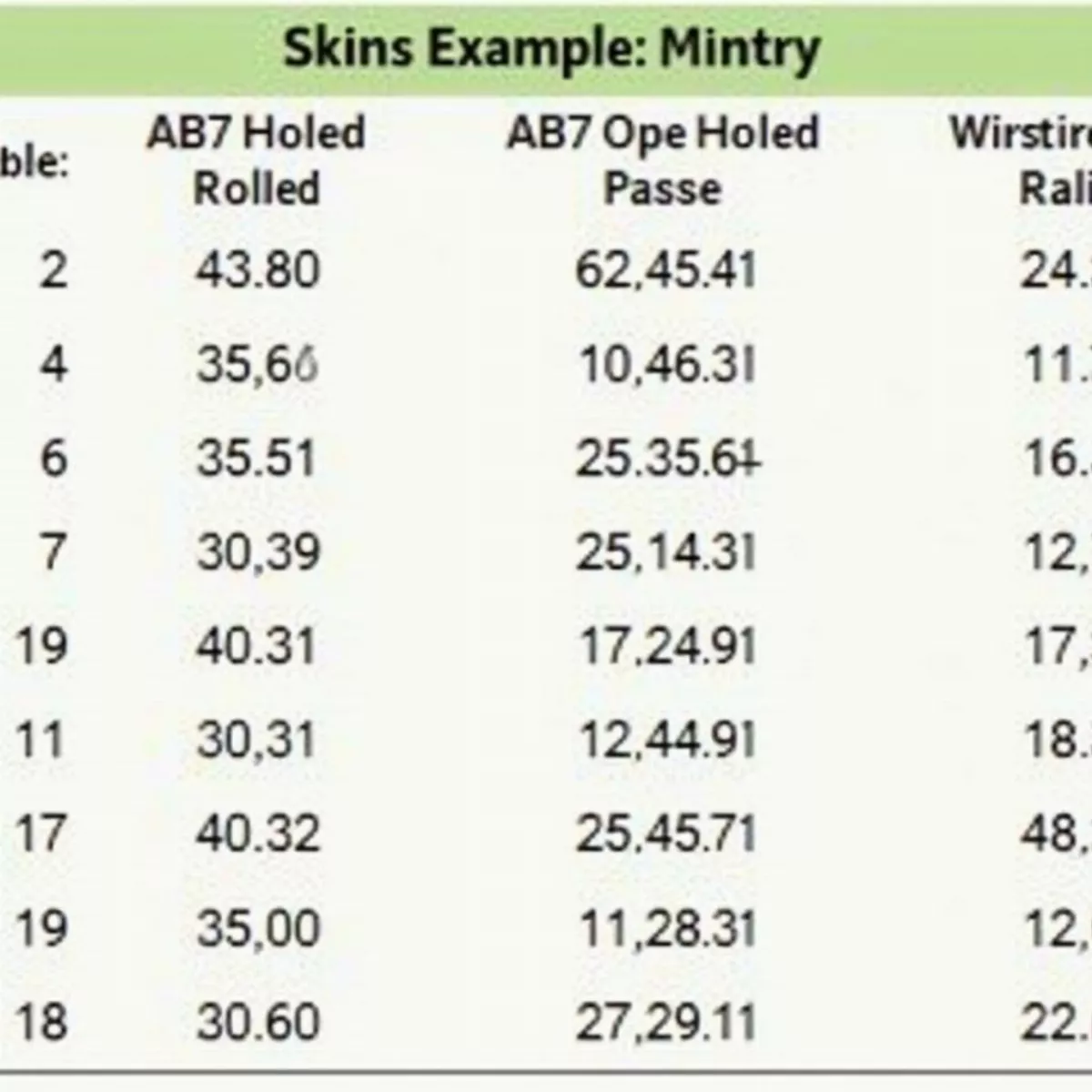Golf is a game rich with tradition and variations. Among these, the Skins Game stands out as a fun, competitive format that collects the best of head-to-head duels and adds a twist of excitement to the round. In this article, we’ll dive deep into how to play the Skins Game, discussing rules, strategies, and tips to make your game engaging.
What is a Skins Game?
The Skins Game is a popular scoring format in golf where each hole has a monetary value (the “skin”). Players compete to win these skins by having the lowest score on each hole. The real thrill of a Skins Game lies in the stakes and the friendly rivalry it encourages.
Key Features of a Skins Game
- Head-to-head competition: Players often go head-to-head.
- Monetary stakes: Each hole has its own score value.
- Non-traditional scoring: Players can win multiple skins in a single hole or none at all.
Rules of the Skins Game
Before you hit the course for your Skins Game, it’s essential to understand the fundamental rules:
- Select the Players: Typically played with two to four players.
- Determine Hole Values: Assign a value to each hole (e.g., $1 for the front nine and $2 for the back).
- Keep Score: Only the hole winner earns the skin; if tied, the skin carries over to the next hole.
- Winnings: At the end of the round, the player with the most skins wins.
- Tiebreaker Rules: For carried-over holes, the skin is won by the player with the best score on the tiebreaker hole.
Here’s a quick example of how the scoring works:
| Hole | Player 1 | Player 2 | Winner | Value |
|---|---|---|---|---|
| 1 | 4 | 5 | Player 1 | $1 |
| 2 | 3 | 3 | None | $2 (carry over) |
| 3 | 5 | 4 | Player 2 | $2 |
| 4 | 2 | 3 | Player 1 | $1 |
| Total Skins Won | 2 | 1 |
In this instance, Player 1 wins three skins for holes 1, 2, and 4, earning a total of $4!
 Golf Skins Game Scorecard Example
Golf Skins Game Scorecard Example
Strategies for a Successful Skins Game
To enhance your performance in a Skins Game, consider the following strategies:
- Play Smart: Focus on making pars rather than risking birdies, especially on early holes.
- Psychological Game: Pay attention to your opponents’ strategies and adjust accordingly.
- Stay Calm Under Pressure: Skins can create tension; manage nerves to maintain good play.
- Take Advantage of Carryovers: If a player has a chance to win a big skin due to carryover, make it a point to apply pressure.
By understanding the motivations at play and adjusting accordingly, you can leverage both skill and strategy effectively in your Skins Game.
Tips to Enhance Your Skins Game Experience
Make your Skins Game more exciting with these practical tips:
- Set a Reasonable Entry Fee: Make it appealing but not so much that it raises stakes too high.
- Include Side Bets: Create additional fun and engagement with side bets on closest to the pin or longest drive.
- Rotate Partners: Each round, switch up pairs to add variety and social interaction.
Essential Etiquette for Skins Game
- Respect Your Opponents: Maintain good sportsmanship.
- Be Punctual: Arrive on time for tee times.
- Keep Pace: Honor the flow of the game for everyone on the course.
 Golfers Celebrate on Green
Golfers Celebrate on Green
Common Variations of the Skins Game
There are many ways to customize the Skins Game to suit your group’s preferences:
- Team Skins: Form two teams of two players.
- Modified Skins: Adjust rules by using Stableford scoring or match play.
- Themed Skins: Select a specific theme for each hole or round for added flair.
Key Takeaways
- Understand the Rules: Familiarize yourself with the basic guidelines.
- Engage Strategically: Use game strategy and psychology effectively.
- Embrace Variations: Feel free to spice up your game with different formats.
Frequently Asked Questions (FAQ)
1. How is a Skins Game different from match play?
Skins Game awards each hole individually, while match play scores overall performance based on total holes won.
2. Can you play Skins Games alone?
While typically played in groups, you can create a solo challenge against the course or a previous score.
3. What’s the best way to decide hole values?
You can determine values based on difficulty or use a simple structure like increasing values for the back nine.
4. How can I tie the score on a hole in a Skins Game?
If scores are tied, the skin carries over to the next hole until one player wins it.
5. Are there any variations that include handicaps?
Yes, you can implement handicap adjustments for a more level playing field among different skillsets.
 Scenic Golf Course at Sunset
Scenic Golf Course at Sunset
6. What happens if the game ends in a tie?
In the event of a tie, you can organize a playoff hole to determine the winner of the tied skins.
7. Can you introduce additional challenges in a Skins Game?
Absolutely! Incorporate challenges like “closest to the pin” for some holes or unique rules like “double skin” holes.
8. Does the winner get the total sum of all skins?
Yes, the player with the most skins at the end wins their accumulated value in total.
9. How do I keep score in a Skins Game?
You should track skins won per hole along with total skins accumulated.
10. Is betting allowed in Skins Games?
It can include entry fees or side bets, but make sure to establish the rules beforehand.
Now that you’re well-versed in the Skins Game, gather your friends, hit the links, and enjoy the camaraderie and competition it brings! Happy golfing!

 Close-up of a Lazrus golf club grip
Close-up of a Lazrus golf club grip
 Golfer Approaching the Green at Pine Valley
Golfer Approaching the Green at Pine Valley Golfer Escaping Sand Trap at Pine Valley
Golfer Escaping Sand Trap at Pine Valley
 Golfers on Sun City Course
Golfers on Sun City Course